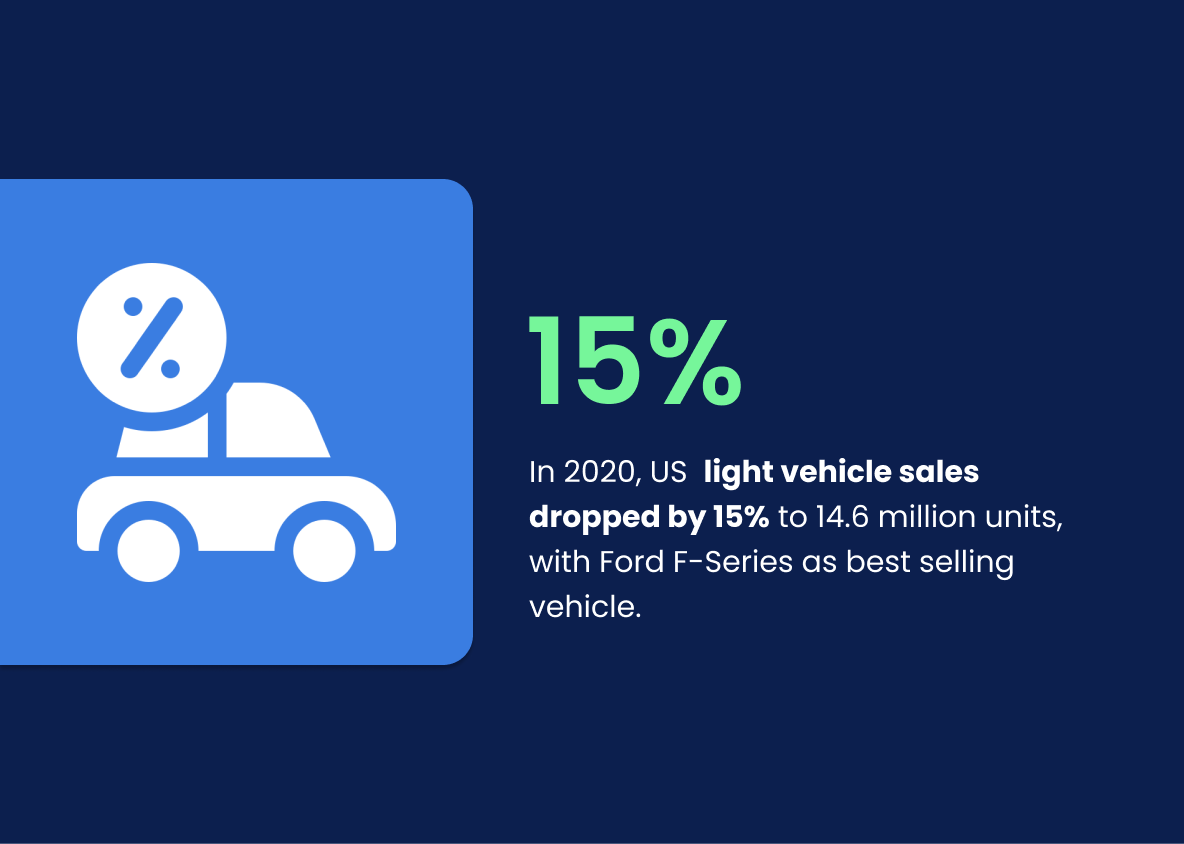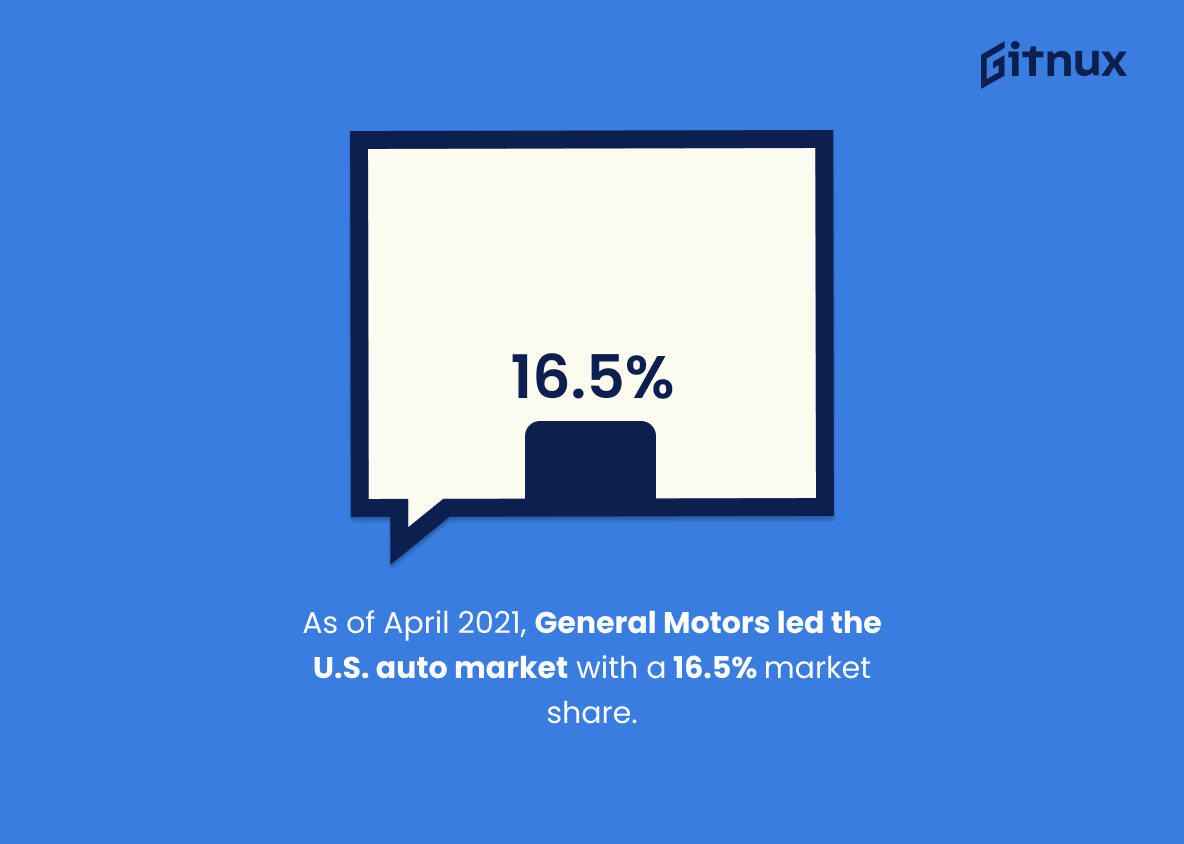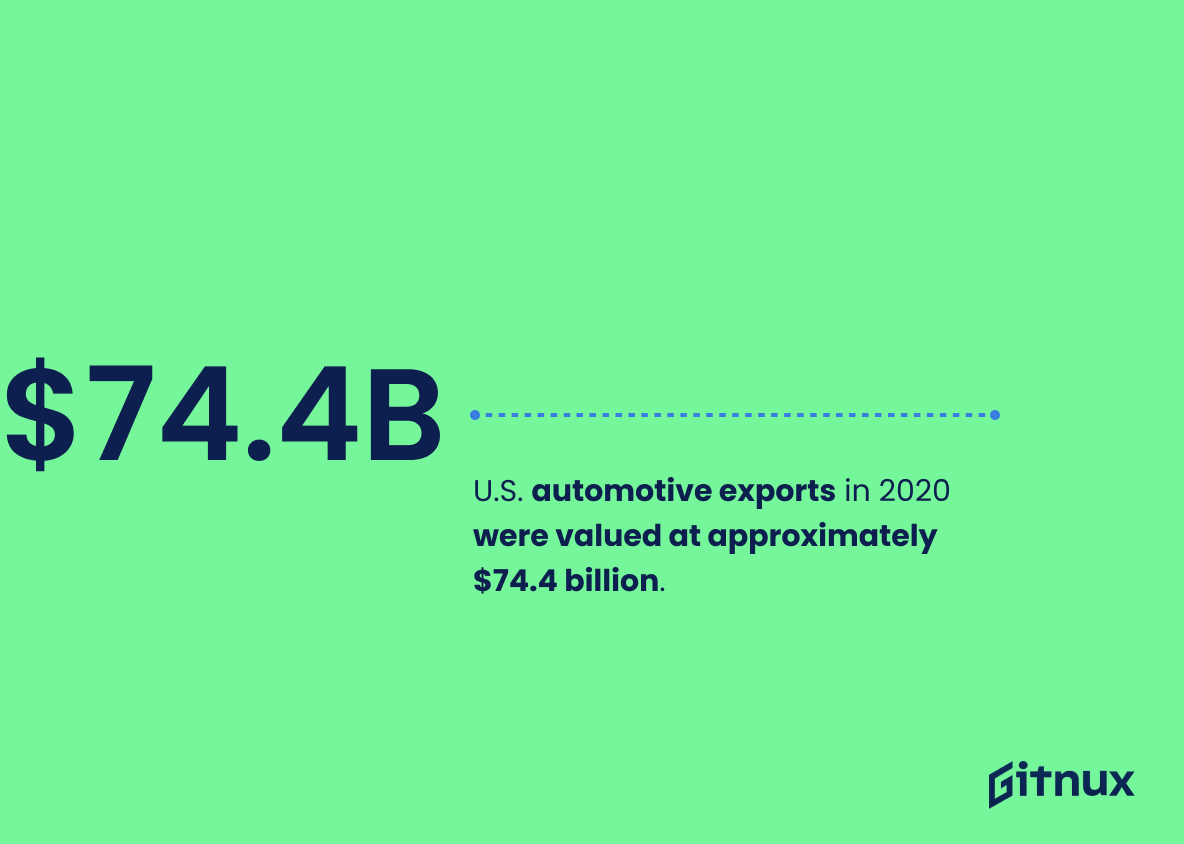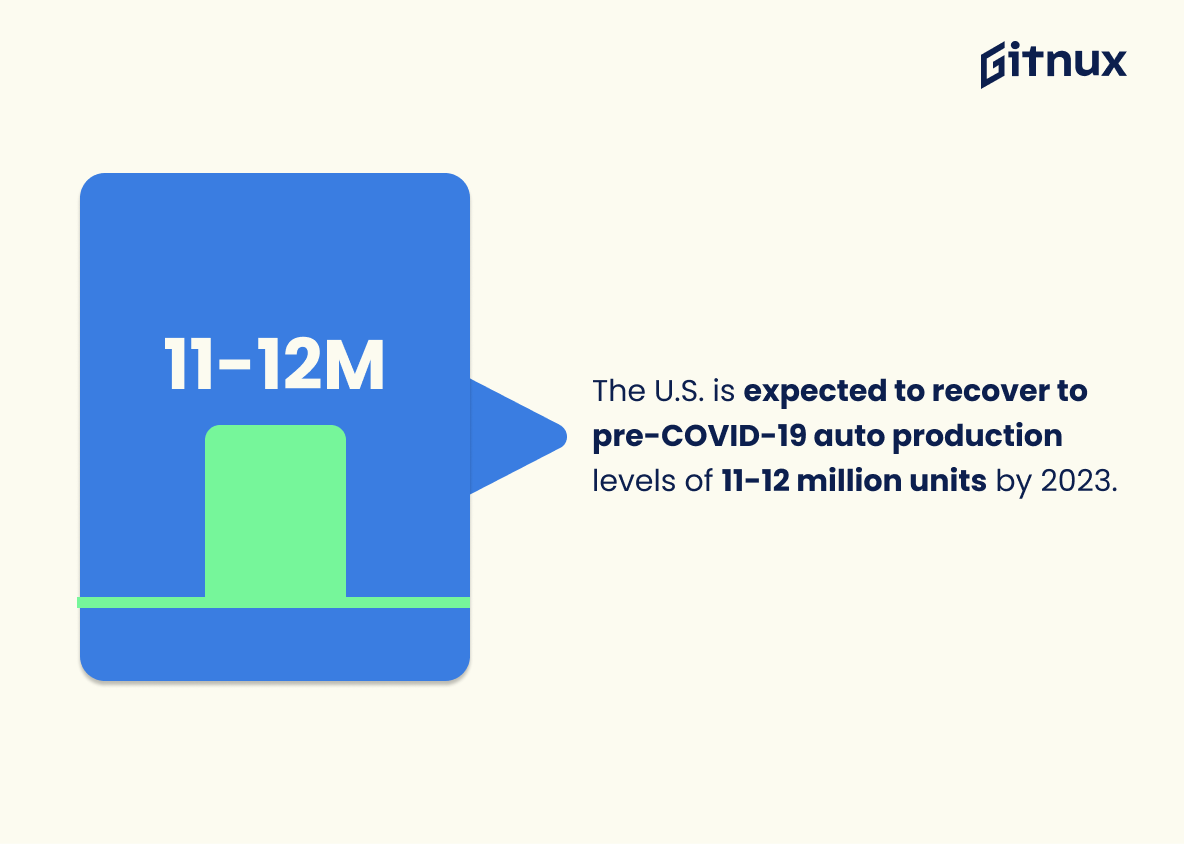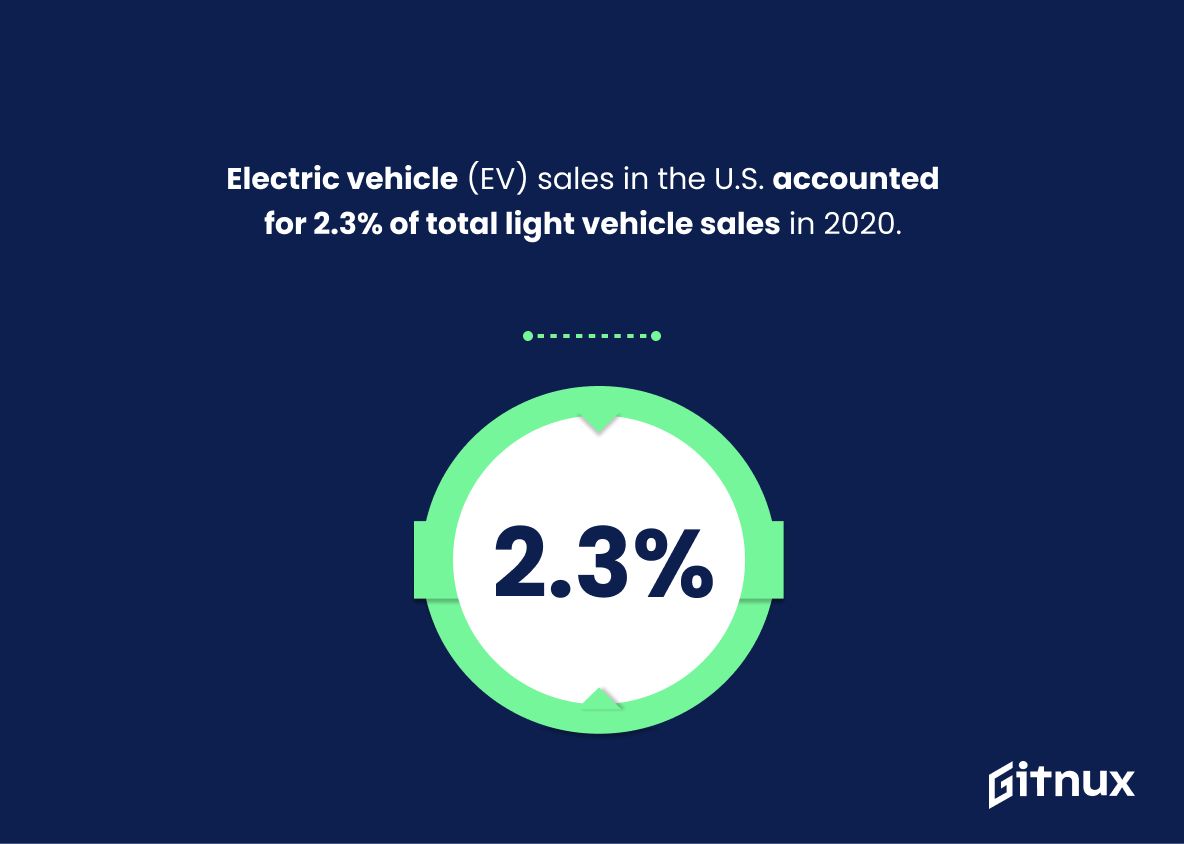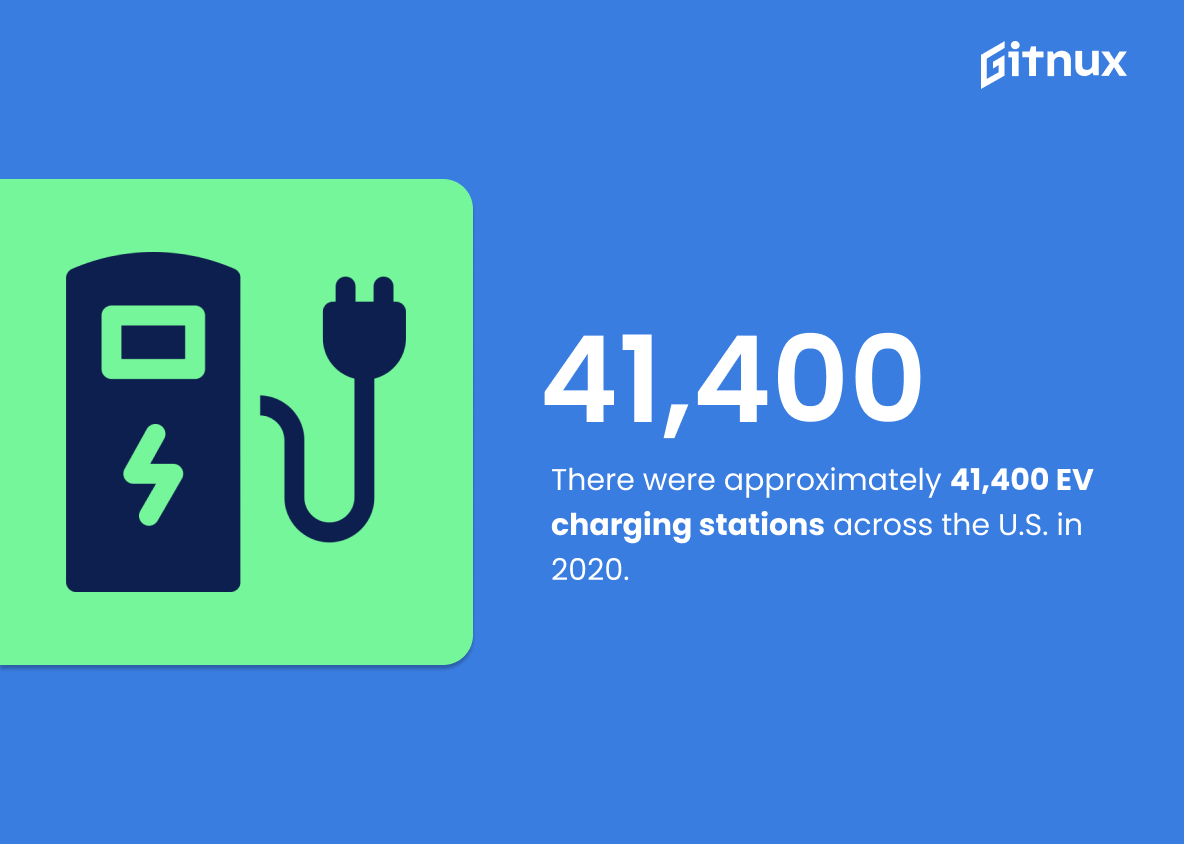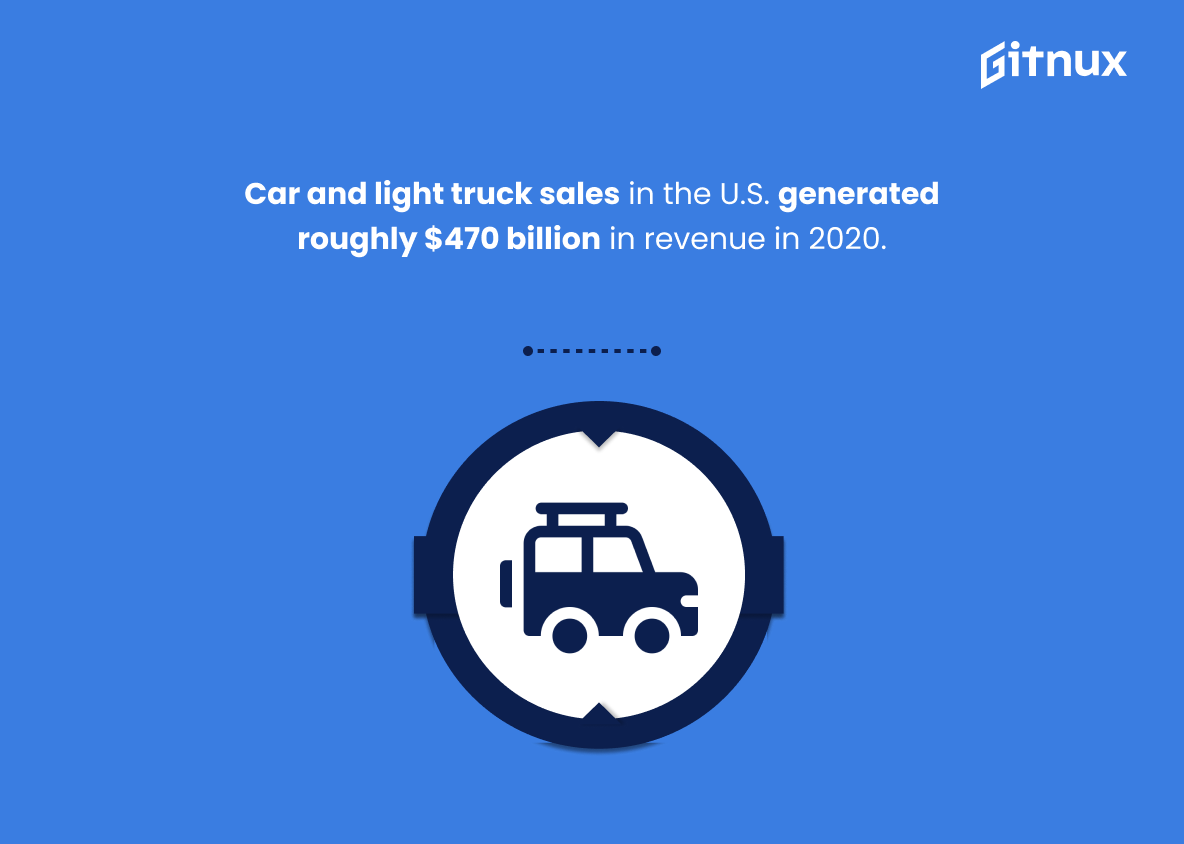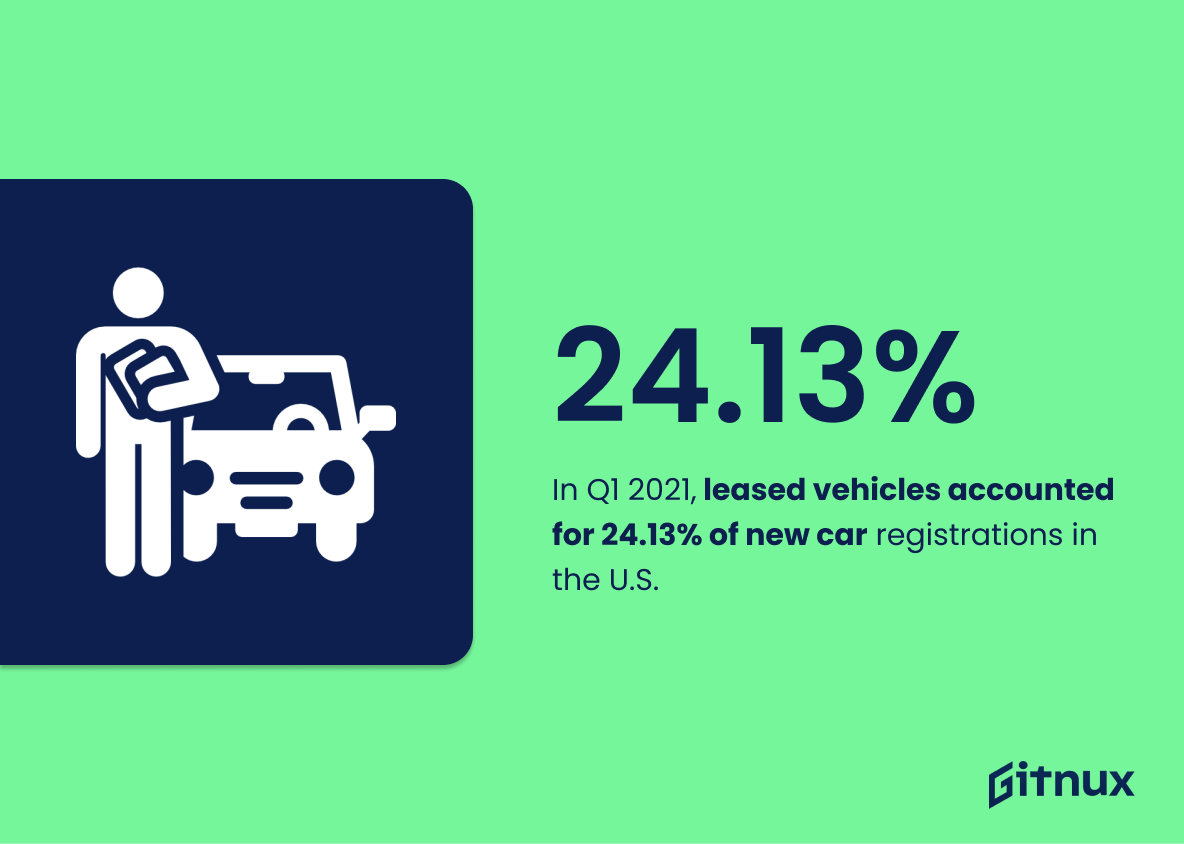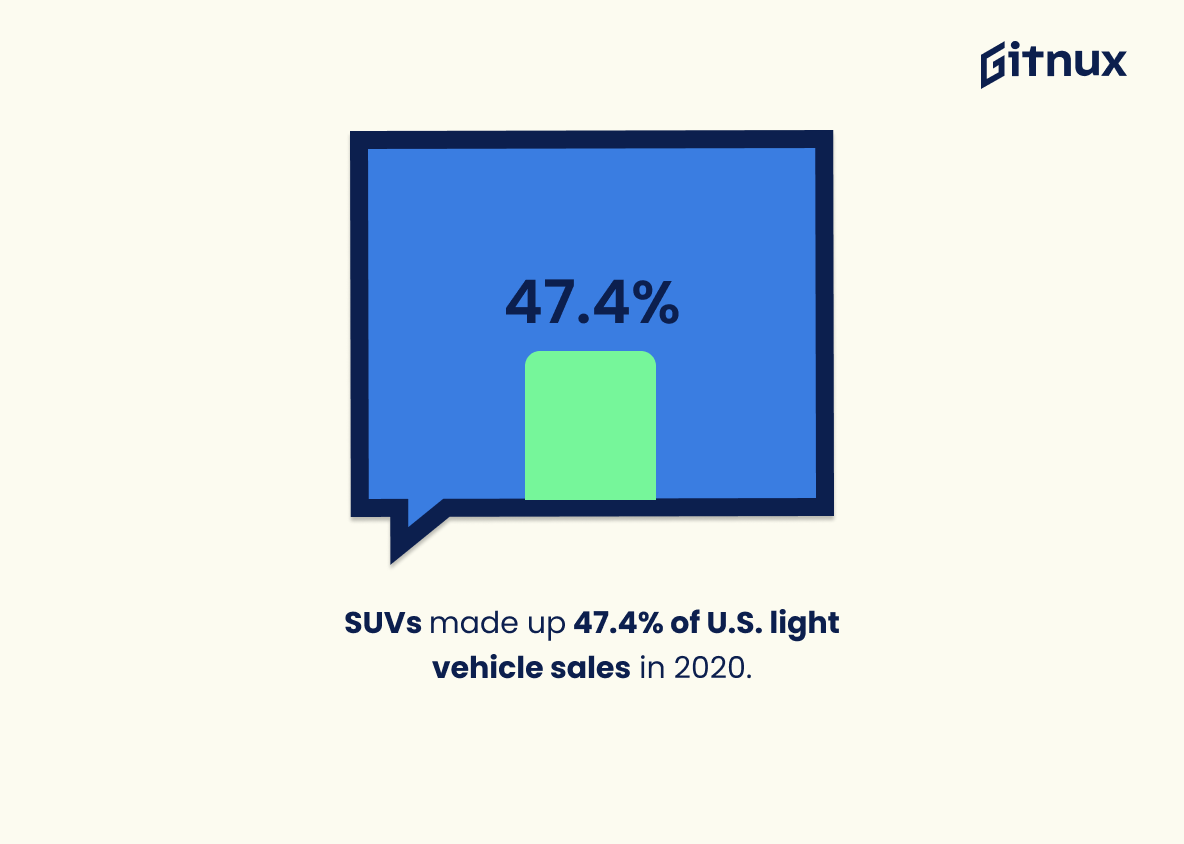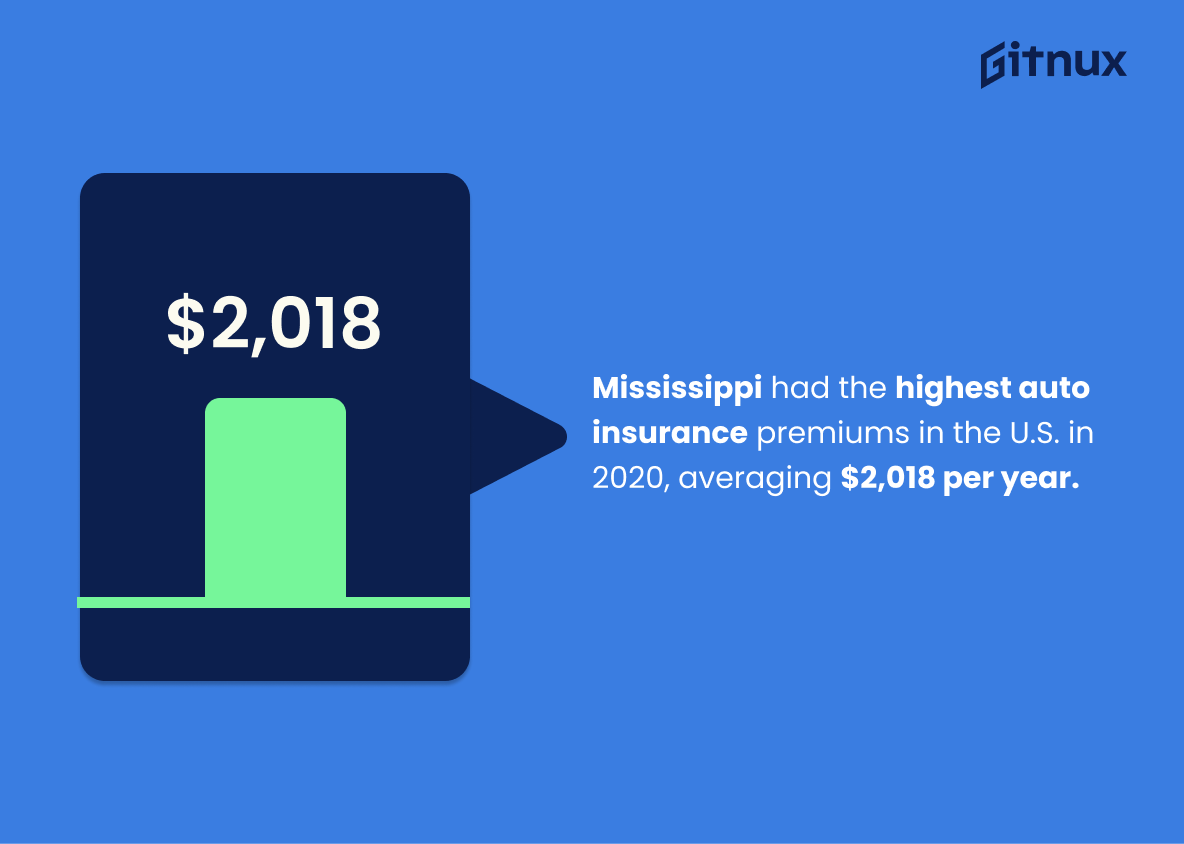The U.S. automotive industry is a major contributor to the nation’s economy, with its direct and indirect employment of over 2.4 million workers in 2019 alone and contribution of 3% to the GDP in 2020. In 2020, the United States ranked second globally for motor vehicle production at 8.8 million units while light vehicle sales volume dropped 15%, compared to 2019 figures, reaching 14.6 million units sold that year – Ford F-Series being the best-selling model with 787 thousand vehicles purchased across America during this period as well as General Motors leading automakers by market share (16%).
The statistic that the U.S. automotive industry contributed 3.0% to the nation’s GDP in 2020 is a powerful indicator of the industry’s importance to the U.S. economy. It demonstrates the industry’s ability to generate economic activity and create jobs, and highlights the need for continued investment in the sector. This statistic is essential to understanding the current state of the U.S. automotive industry and provides a valuable insight into the industry’s potential for growth.
In 2020, the United States ranked second in global automotive production, manufacturing around 8.8 million motor vehicles.
This statistic is a testament to the strength of the U.S. automotive industry, demonstrating that the country is a major player in the global automotive market. It highlights the importance of the industry to the U.S. economy, and the potential for growth and innovation in the sector. It also serves as a reminder of the importance of the automotive industry to the nation’s workforce, with millions of jobs dependent on the sector.
U.S. Automotive Industry Statistics Overview
In 2020, the light vehicle sales volume in the U.S. dropped to 14.6 million units, a decline of about 15% compared to 2019.
This statistic is a telling indication of the impact the pandemic has had on the U.S. automotive industry. It demonstrates a significant decrease in light vehicle sales, which is a key indicator of the industry’s health. This statistic is a stark reminder of the economic hardship that has been felt across the country, and serves as a reminder of the importance of the automotive industry to the U.S. economy.
In 2020, Ford F-Series was the best-selling vehicle in the United States, with over 787,000 units sold.
This statistic is a testament to the enduring popularity of the Ford F-Series, which has been the best-selling vehicle in the United States for decades. It is a clear indication of the strength of the U.S. automotive industry, as well as the loyalty of American consumers to the Ford brand. This statistic is an important part of understanding the current state of the U.S. automotive industry and provides valuable insight into the trends and preferences of American consumers.
As of April 2021, General Motors was the leading automaker in the United States, with a market share of around 16.5%.
This statistic is a telling indication of the current state of the U.S. automotive industry. It shows that General Motors is the leading automaker in the United States, with a commanding market share of 16.5%. This is a significant figure, as it demonstrates the strength of General Motors in the U.S. automotive market and its ability to remain competitive in the face of increasing competition. This statistic is an important piece of information for anyone looking to gain insight into the U.S. automotive industry and its current trends.
In 2020, the U.S. automotive exports were valued at approximately $74.4 billion.
This statistic is a testament to the strength of the U.S. automotive industry. It shows that despite the economic downturn caused by the COVID-19 pandemic, the U.S. automotive industry was still able to generate a significant amount of revenue through exports. This statistic is a reminder of the importance of the automotive industry to the U.S. economy and its ability to remain resilient in the face of adversity.
The U.S. automobile production is predicted to recover to pre-COVID-19 levels of around 11-12 million units by 2023.
This statistic is a beacon of hope for the U.S. automotive industry, indicating that the industry is on track to make a full recovery from the economic downturn caused by the COVID-19 pandemic. It is a sign that the industry is resilient and will be able to bounce back from the crisis, providing a much-needed boost to the economy. This statistic is a testament to the strength of the U.S. automotive industry and its ability to weather the storm.
In 2020, electric vehicle (EV) sales in the United States accounted for around 2.3% of total light vehicle sales.
This statistic is a telling indication of the current state of the U.S. automotive industry. It shows that, despite the growing popularity of electric vehicles, they still only account for a small fraction of total light vehicle sales. This suggests that the industry is still heavily reliant on traditional gasoline-powered vehicles, and that there is still a long way to go before electric vehicles become the norm.
As of 2020, there were around 41,400 charging stations for electric vehicles across the United States.
This statistic is a testament to the growing popularity of electric vehicles in the United States. It shows that the number of charging stations for electric vehicles has increased significantly over the years, indicating that more and more people are investing in electric vehicles. This is an important indicator of the changing landscape of the U.S. automotive industry, and it is important to consider when discussing the current state of the industry.
In 2020, Tesla was the EV market leader in the United States, capturing around 79% of the U.S. battery electric vehicle market.
This statistic is a testament to the success of Tesla in the U.S. electric vehicle market. It shows that Tesla has been able to capture a significant portion of the market share, indicating that the company has been able to effectively compete with other automakers in the industry. This statistic is important to consider when discussing the U.S. automotive industry, as it provides insight into the current state of the market and the success of Tesla in the U.S.
The U.S. auto parts manufacturing industry is worth around $100 billion in revenues.
This statistic is a testament to the sheer size and scope of the U.S. auto parts manufacturing industry. It speaks to the industry’s immense economic impact, as well as its importance to the U.S. economy. It also serves as a reminder of the industry’s importance to the millions of Americans employed in the sector. This statistic is a powerful reminder of the importance of the U.S. automotive industry and its impact on the nation.
In 2020, the average age of vehicles in the United States reached a record high of 11.9 years.
This statistic is a telling sign of the state of the U.S. automotive industry. It indicates that the average age of vehicles in the U.S. is increasing, which could be a result of a decrease in new car sales or an increase in the lifespan of vehicles. This could have a significant impact on the automotive industry, as it could lead to a decrease in sales of new cars and an increase in the demand for used cars. It could also mean that the industry is becoming more efficient in producing cars that last longer. This statistic is an important indicator of the health of the automotive industry and should be taken into consideration when discussing U.S. automotive industry statistics.
In 2020, car and light truck sales in the United States generated around $470 billion in revenue.
This statistic is a testament to the immense economic impact of the U.S. automotive industry. It highlights the sheer magnitude of the industry’s contribution to the U.S. economy, with car and light truck sales alone generating nearly half a trillion dollars in revenue. This figure is a powerful reminder of the importance of the automotive industry to the U.S. economy and its role in driving economic growth.
In Q1 2021, about 24.13% of new car registrations in the United States were leased vehicles.
This statistic is a telling indication of the current state of the U.S. automotive industry. It shows that leasing is becoming increasingly popular among car buyers, which could be a sign of a shift in consumer preferences. This could have implications for the industry, as it could lead to changes in the way cars are marketed and sold. Additionally, it could also have an impact on the types of vehicles that are produced, as manufacturers may need to adjust their production to meet the demands of the leasing market.
In 2020, SUVs accounted for 47.4% of United States light vehicle sales.
This statistic is a telling indication of the current state of the U.S. automotive industry. It shows that SUVs are the most popular type of vehicle among American consumers, accounting for nearly half of all light vehicle sales in 2020. This trend is likely to continue in the coming years, as SUVs offer a combination of practicality, comfort, and style that appeals to many drivers. As such, it is important for automotive companies to take note of this statistic and adjust their strategies accordingly.
In 2020, American consumers held a total of $1.37 trillion in outstanding automotive loans.
This statistic is a telling indication of the strength of the U.S. automotive industry. It shows that despite the economic downturn caused by the pandemic, Americans are still investing in cars and taking out loans to finance them. This is a sign of confidence in the industry and suggests that the automotive sector is still a viable investment for consumers.
In 2020, Mississippi had the highest auto insurance premiums in the United States, averaging at $2,018 per year.
This statistic is a telling indication of the state of the automotive industry in the United States. It highlights the fact that Mississippi has the highest auto insurance premiums in the country, which could be indicative of a lack of competition in the market, or a lack of consumer protection laws. This could be a sign that the automotive industry in the United States is not as competitive as it could be, and that consumers in Mississippi are paying more for their auto insurance than they should be. This statistic is an important one to consider when discussing the state of the automotive industry in the United States.
In 2020, the average U.S. auto repair and maintenance facility generated about $750,000 in annual revenue.
This statistic is a telling indication of the financial success of the U.S. automotive repair and maintenance industry. It demonstrates that the industry is thriving and that it is a lucrative business for those who are involved in it. This information can be used to illustrate the importance of the automotive industry to the U.S. economy and to demonstrate the potential for growth and profitability in the sector.
Conclusion
The U.S. automotive industry is a major contributor to the nation’s economy, with its direct and indirect employment of over 2.4 million workers in 2019 and contribution of 3% to GDP in 2020. In 2020, the United States ranked second globally for motor vehicle production at 8.8 million units while light vehicle sales dropped 15%, reaching 14.6 million units sold that year alone – Ford F-Series being the best-selling model with 787,000 vehicles purchased across America during this period as well as General Motors leading automakers by market share (16%).
The same year saw $74 billion worth of exports from the U.S., an estimated recovery back up to 11-12 million auto production levels by 2023 due to COVID-19 impacts on global markets, electric car sales accounting for 2% total light vehicle purchases alongside 41k charging stations nationwide; Tesla dominating 79% battery EV market share respectively – all these figures indicating a strong presence within American society today despite economic downturns throughout recent years such as high insurance premiums ($2K/year) or average repair & maintenance facility revenue ($750K).
References
0. – https://www.ibisworld.com
1. – https://www.trade.gov
2. – https://www.valuepenguin.com
3. – https://www.ev-volumes.com
4. – https://www.cleantechnica.com
5. – https://www.ihsmarkit.com
6. – https://www.data.bts.gov
7. – https://www.statista.com
8. – https://www.fred.stlouisfed.org
9. – https://www.experian.com
10. – https://www.iseecars.com
